
Earth’s Layers: Crust, Mantle & Core, Seismic Discontinuities
Subscribe to Never Miss an Important Update! Assured Discounts on New Products!
Must Join PMF IAS Telegram Channel & PMF IAS History Telegram Channel
Earth’s Layers (The internal structure of the Earth)
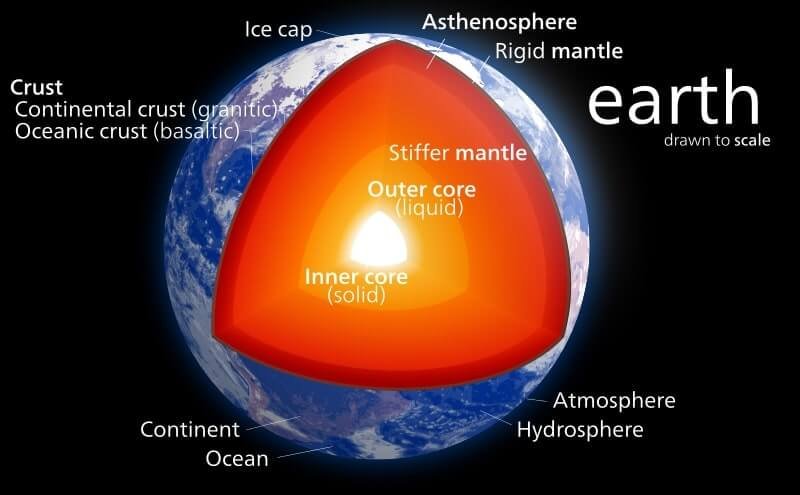
Earth’s Layers (Kelvinsong, from Wikimedia Commons)
- The interior of the earth is made up of several concentric layers of which the crust, the mantle, the outer core and the inner core are significant because of their unique physical and chemical properties.
- The crust is a silicate solid, the mantle is a viscous molten rock, the outer core is a viscous liquid, and the inner core is a dense solid.
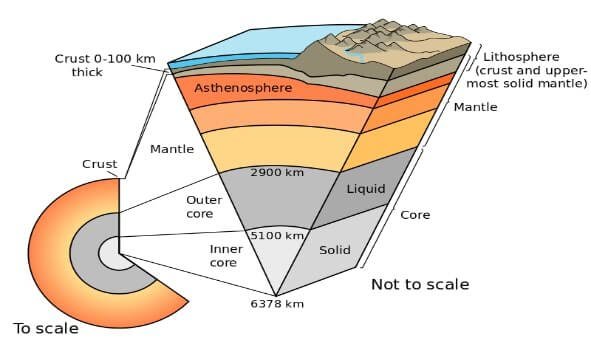
Watch video for better and quick understanding
- Mechanically, the earth’s layers can be divided into lithosphere, asthenosphere, mesospheric mantle (part of the Earth’s mantle below the lithosphere and the asthenosphere), outer core, and inner core.
- Chemically, Earth can be divided into the crust, upper mantle, lower mantle, outer core, and inner core.
The Crust
- The crust is the outermost layer of the earth making up 0.5-1.0 per cent of the earth’s volume and less than 1 per cent of Earth’s mass.
- Density increases with depth, and the average density is about 2.7 g/cm3 (average density of the earth is 5.51 g/cm³).
- The thickness of the crust varies in the range of range of 5-30 km in case of the oceanic crust and as 50-70 km in case of the continental crust.
- The continental crust can be thicker than 70 km in the areas of major mountain systems. It is as much as 70-100 km thick in the Himalayan region.
- The temperature of the crust increases with depth, reaching values typically in the range from about 200 °C to 400 °C at the boundary with the underlying mantle.
- The temperature increases by as much as 30 °C for every kilometre in the upper part of the crust.
- The outer covering of the crust is of sedimentary material and below that lie crystalline, igneous and metamorphic rocks which are acidic in nature.
- The lower layer of the crust consists of basaltic and ultra-basic rocks.
- The continents are composed of lighter silicates — silica + aluminium (also called sial) while the oceans have the heavier silicates — silica + magnesium (also called sima) [Suess,1831–1914 ― this classification is now obsolete (out of date)].
- The continental crust is composed of lighter (felsic) sodium potassium aluminium silicate rocks, like granite.
- The oceanic crust, on the other hand, is composed of dense (mafic) iron magnesium silicate igneous rocks, like basalt.
In geology, felsic refers to igneous rocks that are relatively rich in elements that form feldspar and quartz.
It is contrasted with mafic rocks, which are relatively richer in magnesium and iron.
Felsic refers to rocks which are enriched in the lighter elements such as silicon, oxygen, aluminium, sodium, and potassium.
Most Abundant Elements of the Earth’s Crust
|
|
Element |
Approximate % by weight |
| 1 | Oxygen (O) |
46.6 |
| 2 | Silicon (Si) |
27.7 |
| 3 | Aluminium (Al) |
8.1 |
| 4 | Iron (Fe) |
5.0 |
| 5 | Calcium (Ca) |
3.6 |
| 6 | Sodium (Na) | 2.8 |
| 7 | Potassium (K) | 2.6 |
| 8 | Magnesium (Mg) | 1.5 |
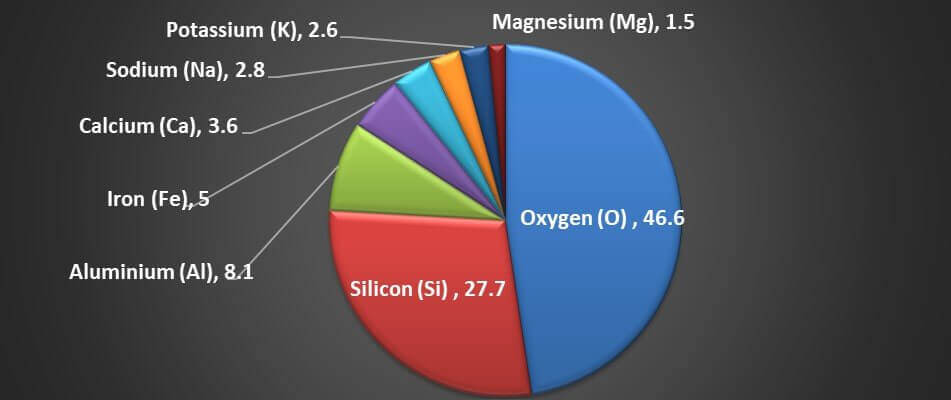
OS CIA
Most Abundant Elements of the Earth
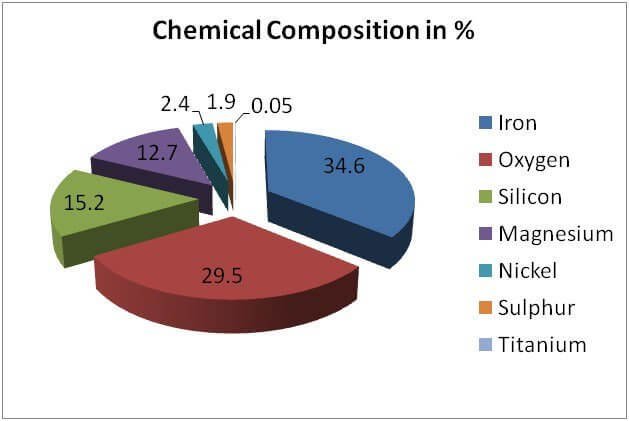

Most Abundant Elements of the Earth’s Crust ==> OS CIA
Most Abundant Elements of the Earth ==> iOS
The Mohorovicic (Moho) discontinuity
- Mohorovicic (Moho) discontinuity forms the boundary between the crust and the asthenosphere (upper reaches of the mantle) where there is a discontinuity in the seismic velocity.
- It occurs at an average depth of about 8 kilometres beneath the ocean basins and 30 kilometres beneath continental surfaces.
- The cause of the Moho is thought to be a change in rock composition from rocks containing feldspar (above) to rocks that contain no feldspars (below).
Lithosphere
- The lithosphere is the rigid outer part of the earth with thickness varying between 10-200 km.
- It is includes the crust and the upper part of the mantle.
- The lithosphere is broken into tectonic plates (lithospheric plates), and the movement of these tectonic plates cause large-scale changes in the earth’s geological structure (folding, faulting).
- The source of heat that drives plate tectonics is the primordial heat left over from the planet’s formation as well as the radioactive decay of uranium, thorium, and potassium in Earth’s crust and mantle.
The Mantle
- It forms about 83 per cent of the earth’s volume and holds 67% of the earth’s mass.
- It extends from Moho’s discontinuity to a depth of 2,900 km.
- The density of the upper mantle varies between 2.9 g/cm3 and 3.3 g/cm3.
- The lower mantle extends beyond the asthenosphere. It is in a solid state.
- The density ranges from 3.3 g/cm3 to 5.7 g/cm3 in the lower mantle.
- The mantle is composed of silicate rocks that are rich in iron and magnesium relative to the overlying crust.
- Regarding its constituent elements, the mantle is made up of 45% oxygen, 21% silicon, and 23% magnesium (OSM).
- In the mantle, temperatures range from approximately 200 °C at the upper boundary with the crust to approximately 4,000 °C at the core-mantle boundary.
- Because of the temperature difference, there is a convective material circulation in the mantle (although solid, the high temperatures within the mantle cause the silicate material to be sufficiently ductile).
- Convection of the mantle is expressed at the surface through the motions of tectonic plates.
- High-pressure conditions ought to inhibit seismicity in the mantle. However, in subduction zones, earthquakes are observed down to 670 km (420 mi).
Asthenosphere
- The upper portion of the mantle is called as asthenosphere (astheno means weak).
- It lies just below the lithosphere extending up to 80-200 km.
- It is highly viscous, mechanically weak and ductile and its density is higher than that of the crust.
- These properties of the asthenosphere aid in plate tectonic movement and isostatic adjustments (the elevated part at one part of the crust area is counterbalanced by a depressed part at another).
- It is the main source of magma that finds its way to the surface during volcanic eruptions.
The Outer Core
- The outer core, surrounding the inner core, lies between 2900 km and 5100 km below the earth’s surface.
- The outer core is composed of iron mixed with nickel (nife) and trace amounts of lighter elements.
- The outer core is not under enough pressure to be solid, so it is liquid even though it has a composition similar to the inner core.
- The density of the outer core ranges from 9.9 g/cm3 to 12.2 g/cm3.
- The temperature of the outer core ranges from 4400 °C in the outer regions to 6000 °C near the inner core.
- Dynamo theory suggests that convection in the outer core, combined with the Coriolis effect, gives rise to Earth’s magnetic field.
The Inner Core
- The inner core extends from the centre of the earth to 5100 km below the earth’s surface.
- The inner core is generally believed to be composed primarily of iron (80%) and some nickel (nife).
- Since this layer can transmit shear waves (transverse seismic waves), it is solid. (When P-waves strike the outer core – inner core boundary, they give rise to S-waves)
- Earth’s inner core rotates slightly faster relative to the rotation of the surface.
- The solid inner core is too hot to hold a permanent magnetic field.
- The density of the inner core ranges from 12.6 g/cm3 to 13 g/cm3.
- The core (inner core and the outer core) accounts for just about 16 per cent of the earth’s volume but 33% of earth’s mass.
- Scientists have determined the temperature near the Earth’s centre to be 6000֯ C, 1000֯ C hotter than previously thought.
- At 6000°C, this iron core is as hot as the Sun’s surface, but the crushing pressure caused by gravity prevents it from becoming liquid.
Remember: when ambient pressure increases the melting point of solid increases, and vice versa. One exception is Ice. In the case of ice increase in ambient pressure will lower its melting point.
Seismic Discontinuities
- Seismic discontinuities are the regions in the earth where seismic waves behave a lot different compared to the surrounding regions due to a marked change in physical or chemical properties.
- Mohorovicic Discontinuity (Moho): separates the crust from the mantle.
- Asthenosphere: highly viscous, mechanically weak and ductile part of mantle.
- Gutenberg Discontinuity: lies between the mantle and the outer core.




![PMF IAS Environment for UPSC 2022-23 [paperback] PMF IAS [Nov 30, 2021]…](https://pmfias.b-cdn.net/wp-content/uploads/2024/04/pmfiasenvironmentforupsc2022-23paperbackpmfiasnov302021.jpg)
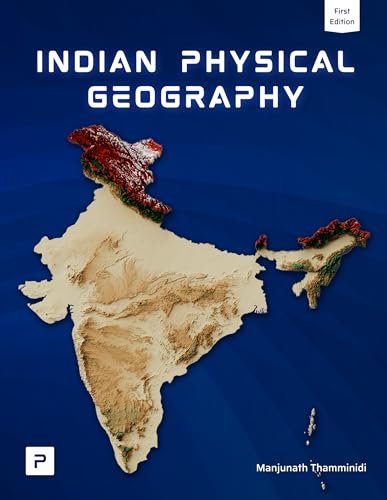
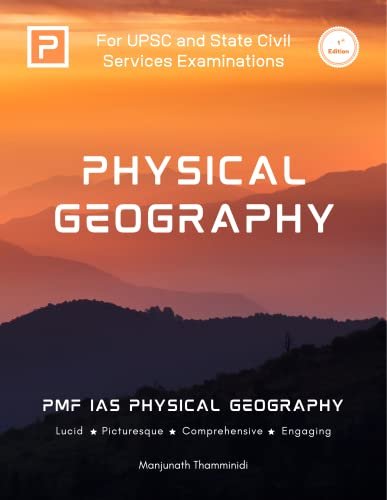


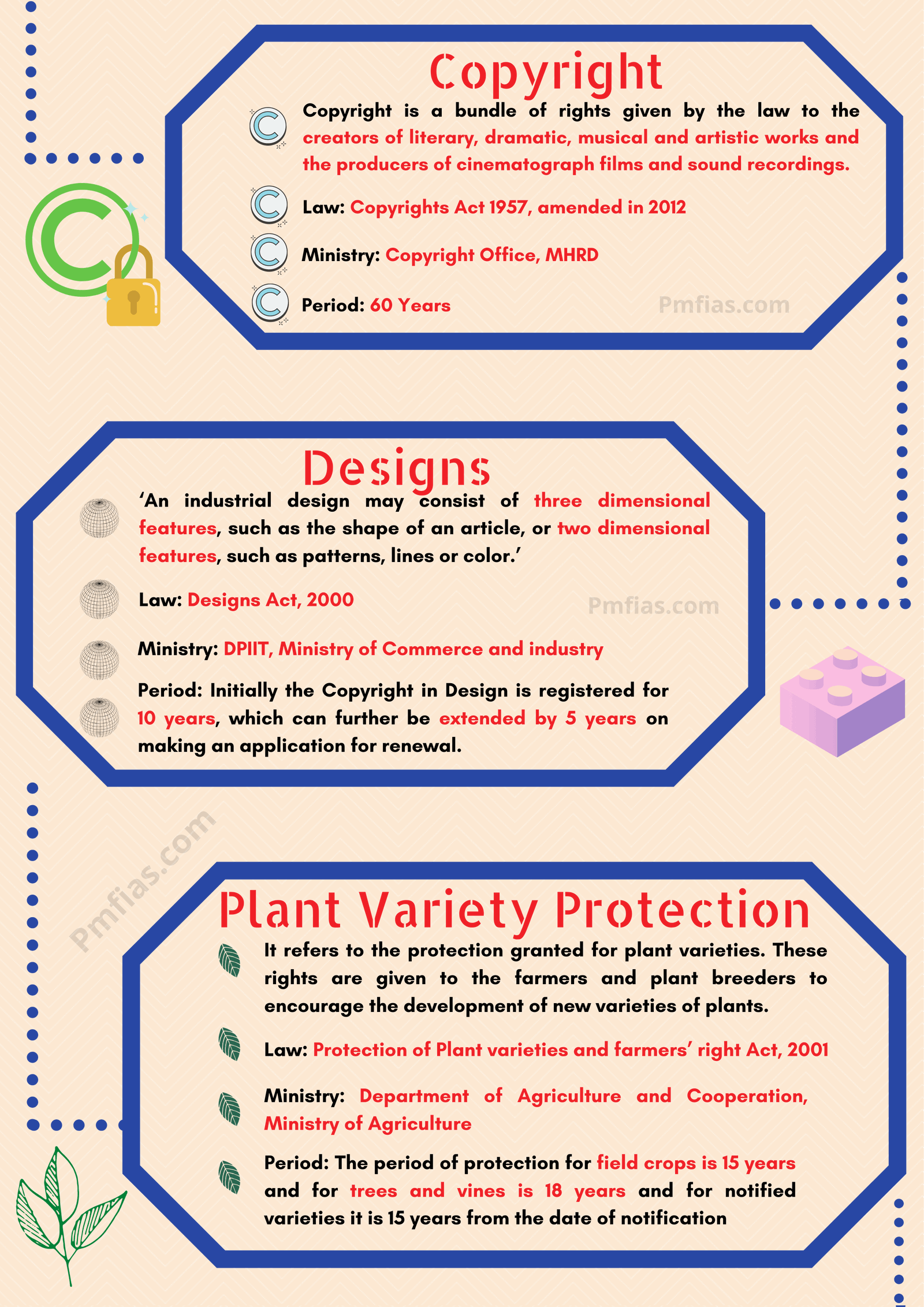
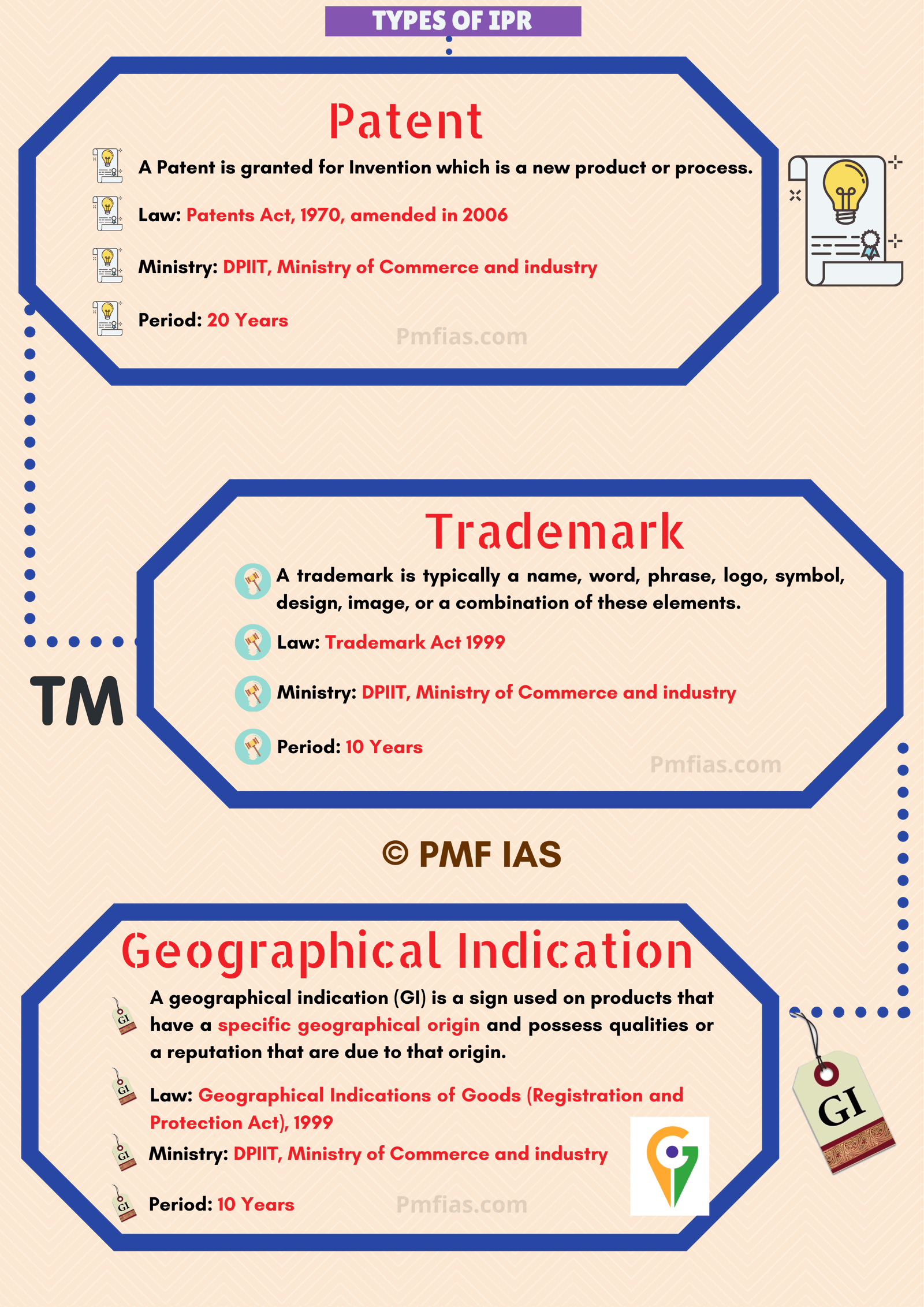

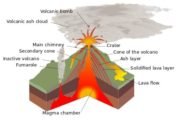





sir, moho’s discontinuity is present between lithosphere and athenosphere as it is revealed from the diagram but it is written that it is present between crust and athenosphere but there is no boundry between them as shown in diagram.
Physical Subdivision is incomplete
dumdum
dumdum chikchik
What’s iOS?
U mom
Can you please elaborate how does high pressure conditions inhibit seismicity in the mantle?